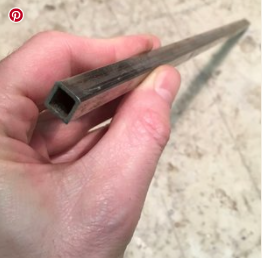DjangoBooks.com
Welcome to our Community!
Categories
- 20K All Categories
- 1.1K General
- 476 Welcome
- 59 Archtop Eddy's Corner
- 146 CD, DVD, and Concert Reviews
- 384 FAQ
- 26 Gypsy Jazz Italia
- 26 Photos
- 202 Gypsy Picking
- 21 Unaccompanied Django
- 15 Pearl Django Play-Along Vol.1
- 17 Gypsy Fire
- 45 Gypsy Rhythm
- 1.4K Gypsy Jazz University - Get Educated
- 130 Gypsy Jazz 101
- 224 Repertoire
- 218 History
- 707 Technique
- 51 Licks and Patterns
- 6 Daniel Givone Manouche Guitare Method Users Group
- 20 Eddie Lang Club
- 1.3K Gypsy Jazz Gear
- 801 Guitars, Strings, Picks, Amps, Pickups and Other Accessories
- 457 Classifieds
- 49 Recording
- 62 Other Instruments
- 18 Violin
- 5 Mandolin
- 22 Accordion
- 7 Bass
- 10 Woodwinds
- 346 Gypsy Jazz Events
- 142 North America
- 109 Europe
- 95 International











Comments
Even if it is, why would you do that in the age of carbon fiber rods? Some of the very best builders in the genre use only CF rods (without adjustable truss rod) to stiffen the neck.
Selmers did not have box section reinforcements. They had strengthening strips of flat duralinium bars along the length but not that box section shown in that post. Fake news I'm afraid.
Taking that theory literally then yes, any slight change in materials or construction would possibly affect the sound, but in reality, the differences would not be discernible to the listener. If we go to that extreme every piece of wood is unique so even sticking with walnut for example for the neck, the grain and density would never be identical. The legendary luthiers we refer to on this forum all had their own variation on the theme, pliage or not, bracing, bent back, laminate against solid etc, etc, and we have all seen the old photos of Favino or Di Mauro at work surrounded by necks, bodies parts and tools so it is logical to understand that compared to today's modern CNC factory technology that every instrument would have its own quirks, good or bad, all of which would in theory influence the sound.
None of which would affect the tone, or sound, as much as the player's fingers, the attack, the vibrato and even the acoustic properties of whatever space the player happens to be in.
We have had discussions on here in the past about the minutiae of tonal properties of bridges, tailpieces, probably even nuts, and then again debates about whether a shellac finish or nitro sounds better (I don't think anyone ever claimed modern sprayed acrylics had a superior tone!).
No, what type of reinforcement (if any) is used inside the neck is going to be even less of a factor.
Meanwhile, I have found Schaller Deluxe tuners with black buttons are far superior to those with white ones, much more sustain although the gold-plated ones with ivory buttons have some pleasing overtones.........discuss.
Meanwhile, I have found Schaller Deluxe tuners with black buttons are far superior to those with white ones, much more sustain although the gold-plated ones with ivory buttons have some pleasing overtones.........discuss.
I've always found the ivoroid ones produce the warmest tones, especially when the RH is between 45-65% and the beer is IPA & above 6.0%ABV. I haven't found any direct connection with varying IBUs. ;-)~
I think the main issue is to pick a neck wood that is relatively light if possible but most importantly that it is STIFF. You don't want to build a 'rubber neck'. You can feel the neck stiffness by hand on any finished guitar. If it feels like a noodle it will probably adversely affect the sound.
Of course it would be different with a good IPA but I was trying to avoid referring to any stimulants; that goes way back to my days as a 'Deadhead'.
If it feels like a noodle........well even the best black button Schallers will never keep that in tune.